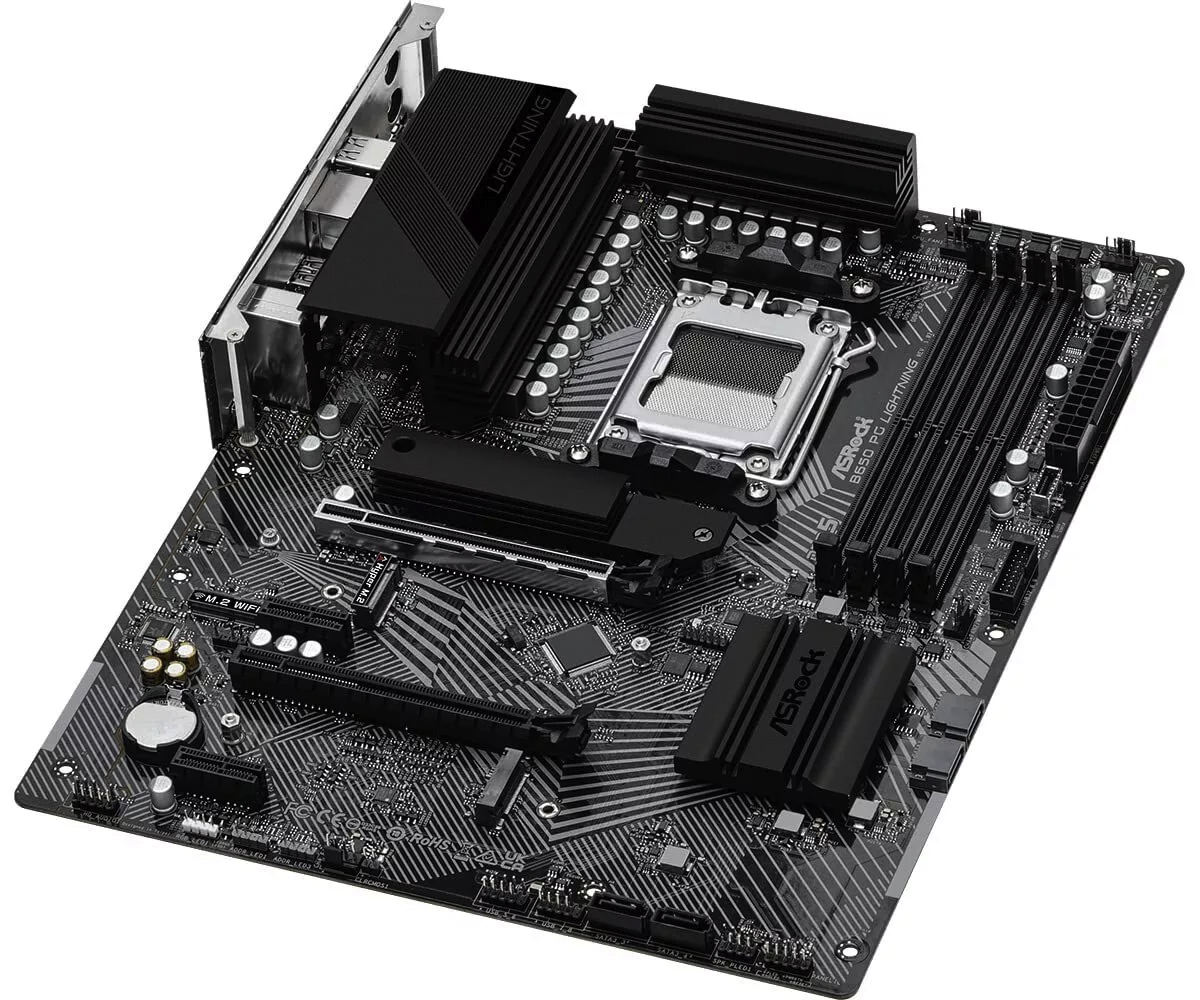Around fifteen years ago, a high quality motherboard could actually increase system performance because it had better memory controllers and more functions. Nowadays, the memory controllers are integrated into the processor. The differences in the chipset performance of the motherboards hardly offer any advantages any more. Let’s get into it.
Benefits of a cost-effective motherboard
For example, the B650 and X670 chipsets from AMD differ particularly in the number of PCIe channels and support for SATA and USB connections. The extreme versions of these chipsets include additional PCIe 5.0 lanes for the primary slots as the only noteworthy extra.
A budget motherboard with a B650 chipset may well suffice for this reason until AMD discontinues support for the AM5 socket.
The same applies to Intel, although Intel changes sockets more frequently. Modern, cost-effective motherboards come with high-quality voltage regulators (VRMs) that deliver clean and stable performance for the CPU. This is crucial in order to achieve the specified clock rates. Inadequate VRMs can overheat under powerful CPUs and negatively affect the overall thermal performance of the PC.
In addition, these motherboards usually offer multiple M.2 and SATA ports for memory expansion and enough USB sockets to meet the needs of most users.

Asrock
Size, connectivity, and other features
High-priced motherboards usually have integrated functions such as Thunderbolt 4, USB 4, PCIe 5.0, 10 Gigabit Ethernet, or several M.2 slots. However, these features are often superfluous for many users. More expensive models often offer exaggerated VRMs that can deliver more performance than even the best CPUs need–too little added value for the extra price.
Another aspect is the size of the motherboard. If you want to build a small mini-ITX PC, you’ll benefit from more compact, specially customized motherboards.
High-end audio solutions such as integrated DACs for sound processing can be attractive. For true audiophiles, however, external solutions are often the better investment.
In terms of Wi-Fi, budget and mid-range motherboards are often already equipped with Wi-Fi 6 or 6E, which is sufficient for most users. Wi-Fi 7, which can only be found on more expensive motherboards, currently offers little additional benefit. In any case, this applies until the corresponding infrastructure is in place.

MSI
The decision in favor of an inexpensive motherboard should be carefully considered, as the market unfortunately also offers less convincing products. Important criteria are the quality of the VRMs and whether all required connections and functions are available.
Before buying, you should read test reports and consider the experiences of other users to avoid making the wrong purchase. Ultimately, a good budget motherboard provides a solid foundation for most PC builds without you having to pay for unnecessary extras.




